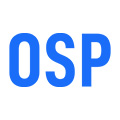The Evolution of Healthcare Software Development: Trends and Innovations
Healthcare software development is playing a pivotal role in transforming the way healthcare providers deliver care and manage operations. As digital technology continues to permeate every aspect of modern life, the healthcare sector is increasingly investing in innovative software solutions to streamline processes, improve patient outcomes, and reduce costs. This evolution in healthcare technology is largely driven by the need for more efficient systems, better interoperability, and enhanced patient engagement. Below are some of the key trends shaping the future of healthcare software development.
1. Telehealth and Remote Patient Monitoring (RPM)
The COVID-19 pandemic accelerated the adoption of telehealth solutions, which have become a staple in modern healthcare delivery. Telehealth platforms allow patients to consult with healthcare providers from the comfort of their homes, reducing the need for physical visits. Complementing telehealth, RPM software has emerged as a critical tool for monitoring patients with chronic conditions, enabling continuous care through wearable devices and sensors. These tools collect and transmit data, such as heart rate, glucose levels, and blood pressure, to healthcare providers in real time. The development of such software is revolutionizing how care is provided, particularly for the elderly and those with mobility challenges.
2. AI and Machine Learning in Healthcare
Artificial Intelligence (AI) and Machine Learning (ML) are revolutionizing healthcare software development. AI is being used in predictive analytics to identify patients at risk of diseases before symptoms appear, helping in early diagnosis and preventive care. For example, AI algorithms can analyze large datasets from medical records, wearable devices, and other sources to identify patterns and predict health outcomes. Additionally, AI-powered chatbots and virtual assistants are streamlining administrative tasks such as scheduling, billing, and patient inquiries. ML is also improving medical imaging, enhancing the accuracy of radiology reports, and assisting doctors in interpreting complex medical images faster and more accurately.
3. Cloud Computing and Data Interoperability
Cloud-based healthcare software solutions are gaining traction due to their scalability, cost-effectiveness, and enhanced security features. Cloud computing allows healthcare organizations to store and access data on remote servers, reducing the need for on-site infrastructure and enabling seamless data sharing between departments and facilities. This is crucial for improving interoperability—an ongoing challenge in healthcare. Software developers are focusing on creating systems that can easily integrate with Electronic Health Records (EHRs) and other healthcare platforms to ensure a smooth flow of information across different systems.
4. Security and Compliance
Given the sensitive nature of patient data, healthcare software developers must prioritize cybersecurity and compliance with regulations like the Health Insurance Portability and Accountability Act (HIPAA). Data breaches can have serious consequences, including legal penalties and a loss of trust. As a result, developers are increasingly incorporating robust encryption protocols, multi-factor authentication, and regular security audits to safeguard patient information.
Conclusion
Healthcare software development is at the forefront of transforming the industry by enabling smarter, more efficient, and patient-centric care. From telehealth and AI-driven innovations to cloud computing and enhanced security, software developers are creating the tools needed to address the complex challenges faced by modern healthcare organizations. As technology continues to advance, the future of healthcare looks increasingly digital, offering endless possibilities for improving patient outcomes and operational efficiency.
Source:
https://www.osplabs.com/custom-healthcare-software-development/The Evolution of Healthcare Software Development: Trends and Innovations
Healthcare software development is playing a pivotal role in transforming the way healthcare providers deliver care and manage operations. As digital technology continues to permeate every aspect of modern life, the healthcare sector is increasingly investing in innovative software solutions to streamline processes, improve patient outcomes, and reduce costs. This evolution in healthcare technology is largely driven by the need for more efficient systems, better interoperability, and enhanced patient engagement. Below are some of the key trends shaping the future of healthcare software development.
1. Telehealth and Remote Patient Monitoring (RPM)
The COVID-19 pandemic accelerated the adoption of telehealth solutions, which have become a staple in modern healthcare delivery. Telehealth platforms allow patients to consult with healthcare providers from the comfort of their homes, reducing the need for physical visits. Complementing telehealth, RPM software has emerged as a critical tool for monitoring patients with chronic conditions, enabling continuous care through wearable devices and sensors. These tools collect and transmit data, such as heart rate, glucose levels, and blood pressure, to healthcare providers in real time. The development of such software is revolutionizing how care is provided, particularly for the elderly and those with mobility challenges.
2. AI and Machine Learning in Healthcare
Artificial Intelligence (AI) and Machine Learning (ML) are revolutionizing healthcare software development. AI is being used in predictive analytics to identify patients at risk of diseases before symptoms appear, helping in early diagnosis and preventive care. For example, AI algorithms can analyze large datasets from medical records, wearable devices, and other sources to identify patterns and predict health outcomes. Additionally, AI-powered chatbots and virtual assistants are streamlining administrative tasks such as scheduling, billing, and patient inquiries. ML is also improving medical imaging, enhancing the accuracy of radiology reports, and assisting doctors in interpreting complex medical images faster and more accurately.
3. Cloud Computing and Data Interoperability
Cloud-based healthcare software solutions are gaining traction due to their scalability, cost-effectiveness, and enhanced security features. Cloud computing allows healthcare organizations to store and access data on remote servers, reducing the need for on-site infrastructure and enabling seamless data sharing between departments and facilities. This is crucial for improving interoperability—an ongoing challenge in healthcare. Software developers are focusing on creating systems that can easily integrate with Electronic Health Records (EHRs) and other healthcare platforms to ensure a smooth flow of information across different systems.
4. Security and Compliance
Given the sensitive nature of patient data, healthcare software developers must prioritize cybersecurity and compliance with regulations like the Health Insurance Portability and Accountability Act (HIPAA). Data breaches can have serious consequences, including legal penalties and a loss of trust. As a result, developers are increasingly incorporating robust encryption protocols, multi-factor authentication, and regular security audits to safeguard patient information.
Conclusion
Healthcare software development is at the forefront of transforming the industry by enabling smarter, more efficient, and patient-centric care. From telehealth and AI-driven innovations to cloud computing and enhanced security, software developers are creating the tools needed to address the complex challenges faced by modern healthcare organizations. As technology continues to advance, the future of healthcare looks increasingly digital, offering endless possibilities for improving patient outcomes and operational efficiency.
Source:
https://www.osplabs.com/custom-healthcare-software-development/








